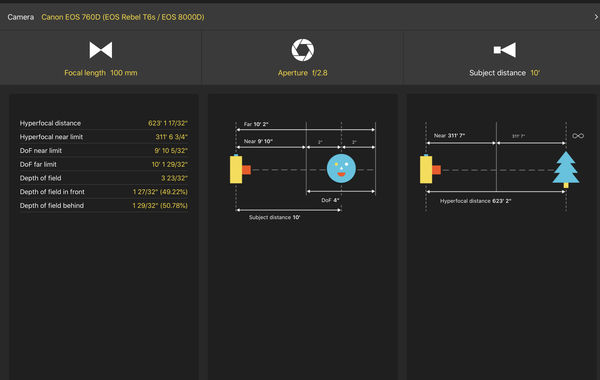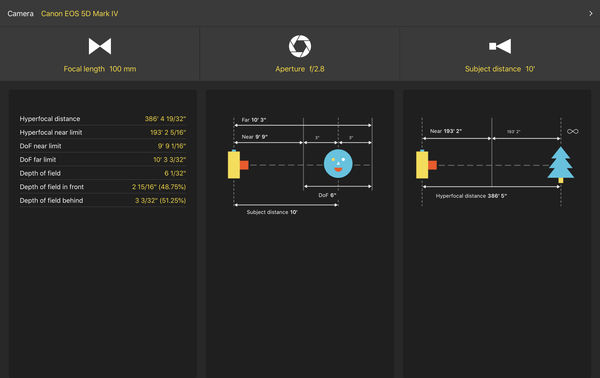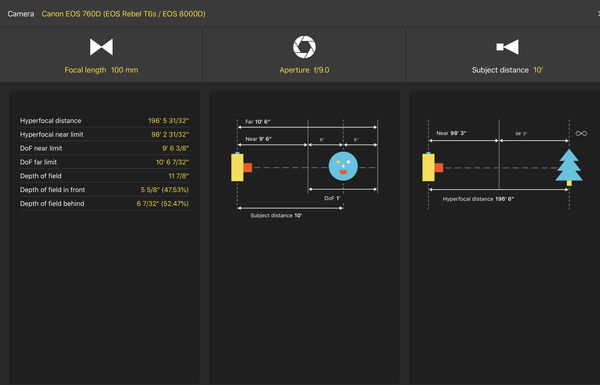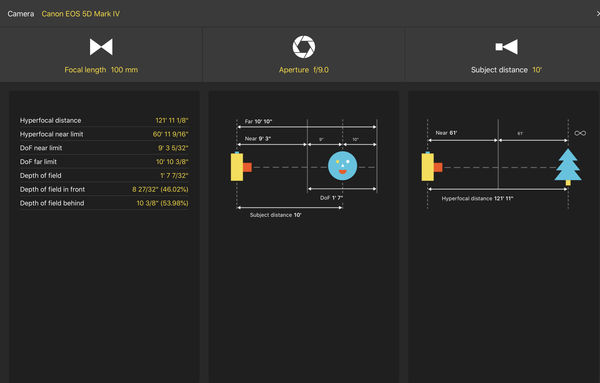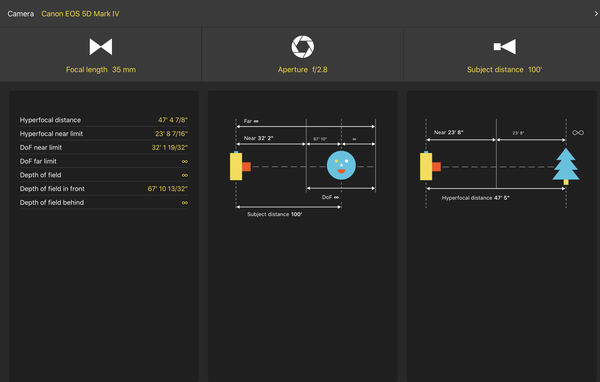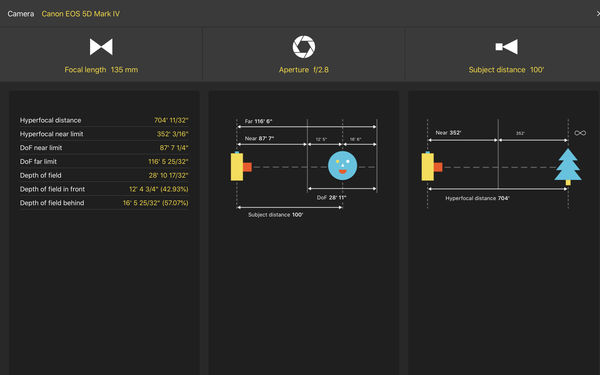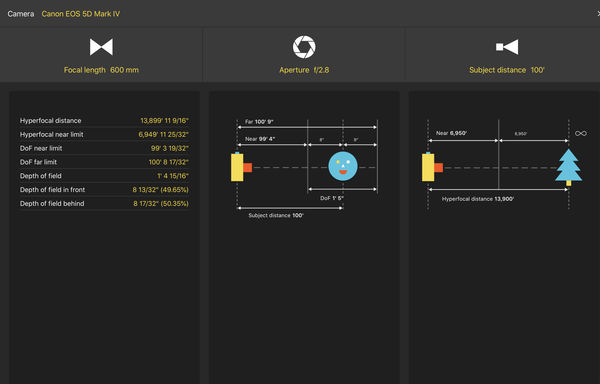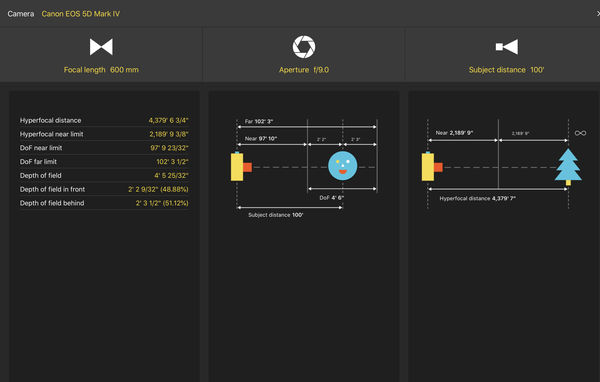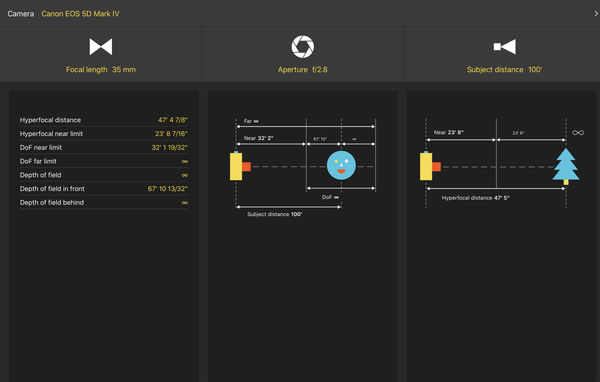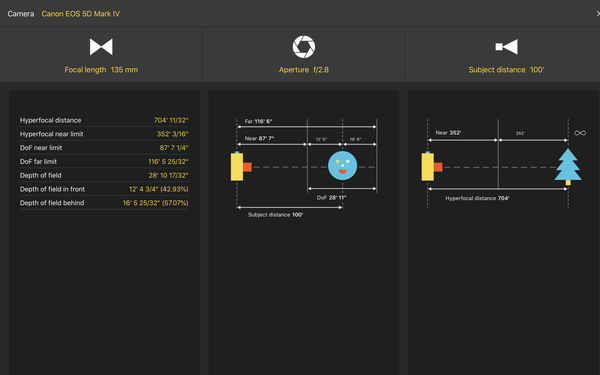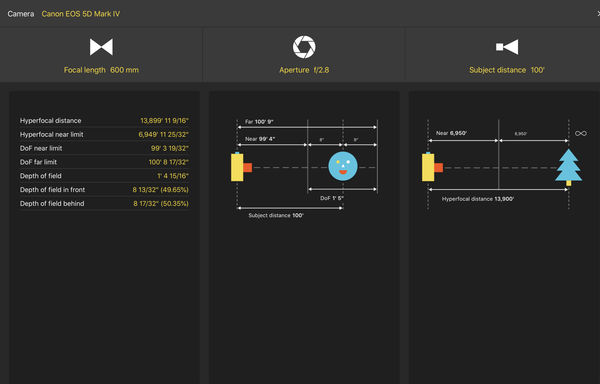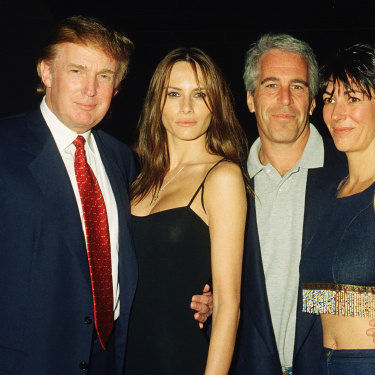Check out Smartphone Photography section of our forum.
Posts for: JohnH3
Oct 18, 2020 10:25:53 #
Jul 23, 2020 11:14:55 #
I would like to request some info regarding the Zhuyun Weebill-S if you have experience with this stabilizer.
I have watched the videos and read a great deal about the unit. I am wondering if anyone in the group actually has/owns the unit or has used one, etc. If yes, would you please give me any thoughts on it that you might have after having experience with it firsthand.
I have never done much video with my DSLRs. I know they do great video. With my job, I am now going to need to produce some quality video clips (School Webmaster) that will be used on our school’s website. I will need a stabilizing gimbal since much of the video will require movement.
I would be most appreciative of any advice regarding this particular unit.
Thank you, John
I have watched the videos and read a great deal about the unit. I am wondering if anyone in the group actually has/owns the unit or has used one, etc. If yes, would you please give me any thoughts on it that you might have after having experience with it firsthand.
I have never done much video with my DSLRs. I know they do great video. With my job, I am now going to need to produce some quality video clips (School Webmaster) that will be used on our school’s website. I will need a stabilizing gimbal since much of the video will require movement.
I would be most appreciative of any advice regarding this particular unit.
Thank you, John
Jul 13, 2020 22:16:26 #
This entire series has been filled with spectacular images. Outstanding shots and editing.
Check out Travel Photography - Tips and More section of our forum.
Jul 12, 2020 11:21:51 #
bleirer wrote:
Interesting information, but you have to consider ... (show quote)
Very true. I should have made mention of that fact. Thank you for pointing out that omission. Even though the depth of field is shallower with equivalent settings in the crop frame body, there is a remarkable difference in the shooting distance to obtain a similar image. Very good point.
Jul 12, 2020 11:13:42 #
bleirer wrote:
Not trying to be ornery but motion blur is not aff... (show quote)
Maybe I didn’t state it perfectly, but if you cannot use a tripod and you are using a long lens hand held at a slower than optimal shutter speed even if shooting a stationary object, isn’t camera shake, which is lessened by IS going to result in motion blur being potentially present in your image? It has been my experience that any camera shake at a slower shutter speed results is a less thsn crisp sharp image.
Jul 12, 2020 11:04:52 #
olemikey wrote:
You did a good job with your article, and it should help those who need it, and it should be appreciated (at the very minimum) for the effort and information. I appreciate your effort, but don't be surprised if you get more than just good feedback. I too like more than just the eyes in focus - I want the whole bird, cat/dog, bear, person, etc. in sharp focus, if possible. Again, good job!
Thank you! I have no illusions that some will not rip it to threads! 😜
Jul 11, 2020 23:49:40 #
I want to preface this post. It is primarily intended for an inexperienced long lens or macro user.
Over the past year, I have read and even commented on a few posts where people have expressed dissatisfaction with newly purchased telephoto lenses. I understand the plight because I have been there myself. I am an amateur photographer who is constantly learning from those much better than I am; however, to the inexperienced long lens user, I feel that the school teacher in me might have some insight to offer. I assure you that your new Tamron or Sigma 150-600mm lens or even your 100mm macro is a good lens capable of producing superb images. When I first bought versions of these two lenses, I thought I had wasted money. I was very displeased initially; however, the problem was me. It was never the lens. I might just be that you are overlooking a few key elements in using these lens.
I came to some realizations when recently trying to help two friends that are both far better photographers than I am navigate the pitfalls of recently purchased lenses.
A 35mm lens tends to be very forgiving in many respects. You generally get sharp crisp pictures when using them even if making some basic mistakes. There is a reason that the lenses installed in smart phones have short focal lengths often much shorter than 35mm. On the other hand, the longer the focal length of the lens, the more unforgiving it becomes.
There are two components of using a long lens that I would like to present: depth of field (DOF), and motion blur. I will discuss them in that order.
Depth of Field:
Initially when I started using my longer lenses and especially my Canon EF 100mm L Macro at close distances, I was beyond displeased with the results. Parts of my pictures were always out of focus. I don’t mean the backgrounds either (bokeh). I mean the subjects themselves. I thought I was doing everything correctly. What I had not considered to the extent that I should have was depth of field. I was always aware of it and actually familiar with it especially with my then current prime and zoom lenses, but I was way off when it came to the 150-600mm and even more so the 100mm macro. At the time I purchased both lenses, I was shooting with a Canon T6s crop frame body, which actually compounded the problems.
My favorite DOF chart is the one in the Photo Pills App. It allows you to enter the camera model. You then enter your lenses’ focal length, the F setting (aperture), and the distance from the subject. One night after I purchased the app and started playing around with it, I made some inexperienced photographer discoveries. I was shooting with settings that produced very narrow or shallow depths of field. No wonder the elk’s eye and face were focused while his hind end was out of focus! Yes, the light came on! By this time, I also had my first full frame camera. I then started alternating the camera models in the app from my full frame camera to my crop frame model and discovered that with all other factors the same, the depth of field was narrower on the crop frame body.
The first two pictures posted below illustrate the difference of DOF with a 100mm lens between the Canon 5DMKIV full frame and the T6s crop frame. Notice that the full range of the DOF with the full frame is six (6) inches as compared to four (4) inches on the crop frame. The lens and settings remained consistent at 100mm / f2.8 / 10 feet.
On the third and fourth pictures posted below, I have changed only the aperture setting to F9 still using a 100mm lens at a distance of 10 feet. As you will see, the DOF widened significantly; however, the DOF on the full frame (1’7”) remains substantially wider than the crop frame ( 1’0”).
The next three pictures (fifth-seventh) posted below illustrate the DOF differences at f2.8 and a distance of 100 feet using a 35mm focal length, a 135mm focal length, and a 600mm focal length. As you can see the DOF varies significantly. 35mm = infinity / 135mm = 28’11” / 600mm = 1’5”. (Of course, not many long lenses will go to F2.8. You are generally looking at best at F4 and higher as you zoom to longer focal lengths. I maintained F2.8 merely for comparison purposes.)
Based upon this information, shooting a large object such as a large animal is going to possibly have focal issues (unless your intention is to only have a small part of the object in perfect focus) if you don’t fully consider DOF variables.
The final picture below illustrates the 600mm lens still at 100 feet, but with an aperture at F9. The change in that single variable now produces a DOF of 4’6”. At this setting, a larger object will be better focused from front to rear.
These same principles apply to using a macro lens at close distances. (F2.8 is often achievable with many macro lenses in the 60mm to 100mm focal lengths.)
What I learned was that when using a long lens or even a shorter lens such as a 100mm macro at a closer distance is that DOF becomes a crucial factor in obtaining a satisfactory image. I learned that sometimes I must raise the ISO and close down the aperture (higher number) in order to widen the DOF to a width where the entire subject is in focus front to back. I finally came to the realization that I can crank up the ISO and up the aperture number and still obtain a good quality image. I also learned that I needed to spend some time studying DOF charts specifically for the lens I own and use. I also keep my smart phone and the Photo Pills app handy when shooting with my long and macro lens.
Shutter Speed:
I always thought the shutter speed variable was obvious, but I later realized it was obvious to me because two friends from our local camera store (Cameragraphics of Auburn, AL) John Oliver and John Rhodenizer explained to me early on in my DSLR endeavors that you tend to get sharper images with faster shutter speeds. When I bought my Sigma 150-600mm, I quickly learned that it is “crucial” to have a faster shutter speed when using a longer focal length to avoid motion blur in my photos. I suspect that many inexperienced long lens users especially when shooting hand held mistake motion blur for focus issues. Motion blur occurs when you the photographer moves the camera minutely during the shot. To the inexperienced photographer, it can appear as an out of focus image. Even small movements are magnified exponentially at longer focal lengths.
Motion blur is easily avoided by using a faster shutter speed. Also enable IS (Image Stabilization - called numerous things depending on the lens manufacturer) to help reduce motion blur. However, stabilization modes don’t actually stabilize an object. They help stabilize your movement while holding the camera when shooting handheld. Some newer camera models even have in camera image stabilization modes.
I have often heard that that you should always use a shutter speed that at least matches the focal length of your lens. (Example: at least 1/100 for a 100mm lens or 1/600 for a 600mm lens.) Personally, as a lens exceeds 300mm, I double that number if possible. Admittedly, shutter speeds can be limited due to ISO constraints, light conditions, etc. I do find that in general by using as fast a shutter speed as possible, motion blur is generally eliminated and avoided.
I am sure that this post is elementary for most photographers on this site. As well, I suspect some of the seasoned professionals will pick it apart and tear it to threads; however, I passed this same information and explanations along to two very good photographers that I highly respect. I simply made the personal discoveries first. I do think they were both more satisfied with their photos when using their longer lenses and macro lenses after trying my suggestions.
As I mentioned, I am a teacher. Specifically, I am a music teacher. I have learned that photography is much like playing an instrument. It first requires understanding, and second, practice practice practice. For those of you venturing into telephoto or close distance macro photography, I strongly encourage you to study the DOF charts for your lenses of choice especially ones you are not as familiar with as some you use regularly. Learn to apply both the principles of DOF and shutter speeds to your shooting. Explore different settings and find what works for you when using your equipment.
Over the past year, I have read and even commented on a few posts where people have expressed dissatisfaction with newly purchased telephoto lenses. I understand the plight because I have been there myself. I am an amateur photographer who is constantly learning from those much better than I am; however, to the inexperienced long lens user, I feel that the school teacher in me might have some insight to offer. I assure you that your new Tamron or Sigma 150-600mm lens or even your 100mm macro is a good lens capable of producing superb images. When I first bought versions of these two lenses, I thought I had wasted money. I was very displeased initially; however, the problem was me. It was never the lens. I might just be that you are overlooking a few key elements in using these lens.
I came to some realizations when recently trying to help two friends that are both far better photographers than I am navigate the pitfalls of recently purchased lenses.
A 35mm lens tends to be very forgiving in many respects. You generally get sharp crisp pictures when using them even if making some basic mistakes. There is a reason that the lenses installed in smart phones have short focal lengths often much shorter than 35mm. On the other hand, the longer the focal length of the lens, the more unforgiving it becomes.
There are two components of using a long lens that I would like to present: depth of field (DOF), and motion blur. I will discuss them in that order.
Depth of Field:
Initially when I started using my longer lenses and especially my Canon EF 100mm L Macro at close distances, I was beyond displeased with the results. Parts of my pictures were always out of focus. I don’t mean the backgrounds either (bokeh). I mean the subjects themselves. I thought I was doing everything correctly. What I had not considered to the extent that I should have was depth of field. I was always aware of it and actually familiar with it especially with my then current prime and zoom lenses, but I was way off when it came to the 150-600mm and even more so the 100mm macro. At the time I purchased both lenses, I was shooting with a Canon T6s crop frame body, which actually compounded the problems.
My favorite DOF chart is the one in the Photo Pills App. It allows you to enter the camera model. You then enter your lenses’ focal length, the F setting (aperture), and the distance from the subject. One night after I purchased the app and started playing around with it, I made some inexperienced photographer discoveries. I was shooting with settings that produced very narrow or shallow depths of field. No wonder the elk’s eye and face were focused while his hind end was out of focus! Yes, the light came on! By this time, I also had my first full frame camera. I then started alternating the camera models in the app from my full frame camera to my crop frame model and discovered that with all other factors the same, the depth of field was narrower on the crop frame body.
The first two pictures posted below illustrate the difference of DOF with a 100mm lens between the Canon 5DMKIV full frame and the T6s crop frame. Notice that the full range of the DOF with the full frame is six (6) inches as compared to four (4) inches on the crop frame. The lens and settings remained consistent at 100mm / f2.8 / 10 feet.
On the third and fourth pictures posted below, I have changed only the aperture setting to F9 still using a 100mm lens at a distance of 10 feet. As you will see, the DOF widened significantly; however, the DOF on the full frame (1’7”) remains substantially wider than the crop frame ( 1’0”).
The next three pictures (fifth-seventh) posted below illustrate the DOF differences at f2.8 and a distance of 100 feet using a 35mm focal length, a 135mm focal length, and a 600mm focal length. As you can see the DOF varies significantly. 35mm = infinity / 135mm = 28’11” / 600mm = 1’5”. (Of course, not many long lenses will go to F2.8. You are generally looking at best at F4 and higher as you zoom to longer focal lengths. I maintained F2.8 merely for comparison purposes.)
Based upon this information, shooting a large object such as a large animal is going to possibly have focal issues (unless your intention is to only have a small part of the object in perfect focus) if you don’t fully consider DOF variables.
The final picture below illustrates the 600mm lens still at 100 feet, but with an aperture at F9. The change in that single variable now produces a DOF of 4’6”. At this setting, a larger object will be better focused from front to rear.
These same principles apply to using a macro lens at close distances. (F2.8 is often achievable with many macro lenses in the 60mm to 100mm focal lengths.)
What I learned was that when using a long lens or even a shorter lens such as a 100mm macro at a closer distance is that DOF becomes a crucial factor in obtaining a satisfactory image. I learned that sometimes I must raise the ISO and close down the aperture (higher number) in order to widen the DOF to a width where the entire subject is in focus front to back. I finally came to the realization that I can crank up the ISO and up the aperture number and still obtain a good quality image. I also learned that I needed to spend some time studying DOF charts specifically for the lens I own and use. I also keep my smart phone and the Photo Pills app handy when shooting with my long and macro lens.
Shutter Speed:
I always thought the shutter speed variable was obvious, but I later realized it was obvious to me because two friends from our local camera store (Cameragraphics of Auburn, AL) John Oliver and John Rhodenizer explained to me early on in my DSLR endeavors that you tend to get sharper images with faster shutter speeds. When I bought my Sigma 150-600mm, I quickly learned that it is “crucial” to have a faster shutter speed when using a longer focal length to avoid motion blur in my photos. I suspect that many inexperienced long lens users especially when shooting hand held mistake motion blur for focus issues. Motion blur occurs when you the photographer moves the camera minutely during the shot. To the inexperienced photographer, it can appear as an out of focus image. Even small movements are magnified exponentially at longer focal lengths.
Motion blur is easily avoided by using a faster shutter speed. Also enable IS (Image Stabilization - called numerous things depending on the lens manufacturer) to help reduce motion blur. However, stabilization modes don’t actually stabilize an object. They help stabilize your movement while holding the camera when shooting handheld. Some newer camera models even have in camera image stabilization modes.
I have often heard that that you should always use a shutter speed that at least matches the focal length of your lens. (Example: at least 1/100 for a 100mm lens or 1/600 for a 600mm lens.) Personally, as a lens exceeds 300mm, I double that number if possible. Admittedly, shutter speeds can be limited due to ISO constraints, light conditions, etc. I do find that in general by using as fast a shutter speed as possible, motion blur is generally eliminated and avoided.
I am sure that this post is elementary for most photographers on this site. As well, I suspect some of the seasoned professionals will pick it apart and tear it to threads; however, I passed this same information and explanations along to two very good photographers that I highly respect. I simply made the personal discoveries first. I do think they were both more satisfied with their photos when using their longer lenses and macro lenses after trying my suggestions.
As I mentioned, I am a teacher. Specifically, I am a music teacher. I have learned that photography is much like playing an instrument. It first requires understanding, and second, practice practice practice. For those of you venturing into telephoto or close distance macro photography, I strongly encourage you to study the DOF charts for your lenses of choice especially ones you are not as familiar with as some you use regularly. Learn to apply both the principles of DOF and shutter speeds to your shooting. Explore different settings and find what works for you when using your equipment.
Check out Sports Photography section of our forum.
Jul 11, 2020 15:22:45 #
RWR wrote:
Depth of field is solely determined by the reproduction ratio and aperture - the focal length only affects the subject distance.
I will respectfully choose to disagree with you.
If you look at a depth of field chart (or better shoot pictures), there are numerous variables involved that affect the depth of field. At the same distance from a subject using the same aperture setting, you will have a much wider depth of field using a 35mm focal length than a 600mm focal length.
I have attached three pictures to this post to illustrate my point. Examples cite 35mm, 135mm, and 600 mm focal lengths. As you will see, the aperture and distance remain constant at f2.8 and 100 feet, but the longer the focal length is, the narrower the depth of field becomes.
Jul 11, 2020 10:47:16 #
azted wrote:
Sorry, but not all people who think you are gross are liberals. If you are married, I'm sure your wife would object. If you have a daughter, imagine your comment's affect upon her. You really must have a Psycho-sociological problem for you to continue this abuse!
Thank you. You said it far better than I ever could have using much better language and much more tact. I just showed my wife a collection of travelwp’s responses to posts in this section. She wasn’t impressed. Being respectful of a model and someone’s art is not political. It is a matter of decency and where I come from, being a gentleman. If you would like to really entertain yourself, sometime when you are really bored, go look at his posts in the “The Attic” section. This guy is a real gem. Being that he is so rabidly conservative, I would have assumed that he would be a God Fearing Christian and behave accordingly!
BTW... I would have never taken issue with his remark had he left off the political baiting. Going back to my very few visits to the Attic, I suspect he was just baiting everyone to play some kind of game. I consider myself a moderate and I am sure if put in the right situation, we would find out who the real wimp is. Just think of Percy from the movie “The Green Mile” and you likely have travelwp! LOL
I also applaud the work of most of the photographers who post in this section. Your work is generally so very tasteful and artistic.
Jul 11, 2020 10:15:10 #
Yes, I have a gun safe in a closet that is specifically setup to store my camera equipment. I store my camera equipment in a dedicated safe. I bought the gun safe and then built and installed shelves in it spaced to hold my camera equipment. I did design and build the shelves in a manner to facilitate airflow within the safe. I live in the southeastern United States in South Alabama. We live in a high humidity environment. In light of the high humidity that we experience daily, I do monitor and control the humidity in the safe. I keep a hygrometer (humidity monitor) in the safe. I am usually able to keep the levels below the humidity level that is present in the house. I keep a DampRid on the most middle shelf in the safe. I have found it to be the most effective means of controlling the humidity and maintaining levels that are between 35% and 45% humidity levels. Every thing I have always read has stated that these are safe humidity levels for storing camera lenses and equipment. You don’t want the humidity levels to be to low either. If to low, the lubricants on the lens will dry out and damage your lenses as well. The DampRid does capture some moisture so I keep its holding container emptied and wiped out weekly. Being that the safe is airtight, the DampRid in the safe captures small amounts of moisture as compared to the DampRids we keep in our closets, garage (very large ones), camper, and even our pickup truck (not driven daily). I do set the lens out at times just to expose them to light. UV light does help and is essential in reducing the growth of fungus, but to much will damage other lens components as well. I have a good number of lens. Some I use often and constantly and some I seldom use, but when I need them, I want them. Of course, I pretty much use all of the cameras regularly. I have never had any problems with anything. I do monitor my lens carefully though. Especially in the summer months in south Alabama, we see humidity levels from 70%-100% daily. The house A/C manages the humidity levels well, but I am able to maintain the levels I mentioned above in the safe simply by placing a DampRid in it. I worry about this concern for sure. I also worry about protecting my camera equipment (and guns and my wife’s jewelry) should we ever be broken into and robbed. Yes, we have multiple safes in our house: one for cameras and lens, one for guns, and a third smaller one for jewelry and important documents. Also, should we experience a fire that is quickly contained, I would hope the safes would protect my equipment and other items from both heat and potential water damage as well. With that being said, I have no illusions that the safe would protect any of my valuables from a catastrophic fire or an overly determined thief. For us, tornadoes are also a concern. Unfortunately, those things do happen. With such items, it seems that even with special and expensive riders, insurance never fully covers what you own. Good luck in making your decisions and protecting your equipment.
Jul 8, 2020 11:15:08 #
Keep this though in mind: The longer the lens, the shallower the depth of field at any f stop setting as compared to a shorter lens/focal length. Yes, it does get to the point that it doesn’t matter as much in the smaller aperture settings. I have so many friends who have purchased 150-600 mm lens who are initially disappointed with the lens because one part of an image is in focus and other portions are blurry. (Example: They photographed a large animal such as an elk or bear wide open at a fairly close distance. Only part of the animal is in focus and sharp. This outcome was due to the shallow DOF of that longer focal length and chosen f value.) After some discussions with them regarding depth of field and the review of a chart for the camera, focal length, and f settings, they start getting better images. (To me, the Photo Pills app has sections that consider the camera, focal length, and f value with regard to DOF. They are friendly to use.) Why do I say this? Before purchasing a lens, study a DOF chart and gain an understanding of DOF at various focal lengths and f values. Consider the distances you generally shoot, the light conditions, etc. Make sure that you are purchasing a lens with zoom (or a prime) lengths/range and f values that are suitable for your shooting conditions that will afford you sufficient DOF for your intended use. Long lenses can foster a lot of frustration when they are not managed properly. Managed properly, they can foster wonderful results.
Check out Bridge Camera Show Case section of our forum.
Jul 6, 2020 08:36:05 #
Jul 4, 2020 11:13:48 #
No one showed up! Not the million he was predicting anyway! Lol
Jun 17, 2020 08:12:01 #
People in Trump’s party make up the majority of w***e s*******y groups.
People in Trump’s party make up the majority of the Klu Klux Klan.
The list could go on! Point is that there are undesirables on both sides of the aisle! You seem to only want to point them out on one side. Be fair!
People in Trump’s party make up the majority of the Klu Klux Klan.
The list could go on! Point is that there are undesirables on both sides of the aisle! You seem to only want to point them out on one side. Be fair!
Jun 13, 2020 16:08:28 #
The house is in the northern part of Lee County outside of Auburn in the Roxana Community. (Assuming it is indeed the same house.)
Check out Photo Critique Section section of our forum.
